Avoid the parity trap
28th September 2021 | Tim Riesterer

Differentiating your solutions in highly competitive categories.
Are you struggling to create a truly unique value proposition that sets you apart from your competition? You’re not alone. In fact, 88 percent of marketers and sellers surveyed by B2B DecisionLabs aren’t confident their buyers understand what makes their solution unique or valuable.
In well-defined categories, many companies can solve the same problems with similar capabilities and pricing. If you hope to get prospects to choose your solution (and not haggle over price), you must articulate your unique value clearly and effectively.
But how do you create a unique value proposition when so many other solutions look and sound like yours?
To find out, B2B DecisionLabs partnered with Dr Nick Lee, behavioral scientist and Professor of Marketing at Warwick Business School, to study the best way to make your solution stand out in highly competitive categories.
The premise was simple: What if you took the same feature set from the same company and told the story in a different way? Can one version of the story consistently and materially defeat a different version of the story – even when both stories are based on the exact same capabilities?
Message test conditions
Features – This message describes a list of capabilities that help resolve the identified customer challenge. There are no benefit statements to show what value the buyer will receive. It represents a messaging approach that seems to imply value through the capability itself.
Benefits – This message describes the benefits of each capability. These benefit statements are meant to help the buyer understand what the feature will do for them and what that means in terms of business impact. This approach follows the “sell benefits, not features” advice that many companies follow today.
Superlatives – This message adds common cliché adjectives to describe features, including typical superlatives such as: “all-in-one”, “one-stop-shop”, “streamlined”, comprehensive”, and so on. This is a common approach that companies use when trying to express the difference between otherwise similar capabilities.
Telling Details – This message adds specific information and more detailed, emotional language to describe the business problem, the capabilities to solve that problem, and the value of those capabilities. This approach enhances the story with descriptive words, phrases, or images that help the buyer better “experience” what you’re describing.
Research study
B2B DecisionLabs and Dr Lee conducted this research study with 400 B2B professionals. The message test conditions were all based on an anonymized go-to-market pitch for a truck driver recruiting company. The pitch included a set of specific business challenges and corresponding capabilities to resolve those challenges.
Starting from the same set of capabilities, the researchers created four different messages that reflect popular approaches to capability descriptions and value statements. Each message was then positioned as a unique competitor in a head-to-head presentation.
- The “Telling Details” test condition was called OnRoad Logistics.
- The other three test conditions were all called Highway Fleet Services.
In every test scenario, participants saw, in random order, the Telling Details presentation from OnRoad Logistics and one of the other three presentations from Highway Fleet Services.
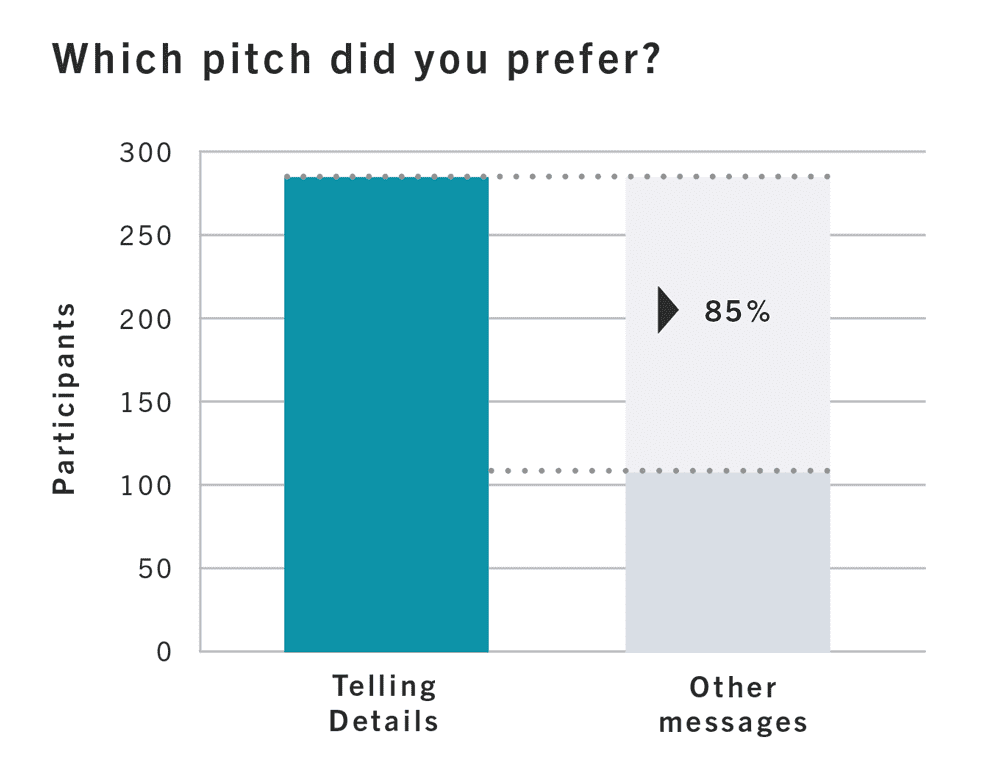
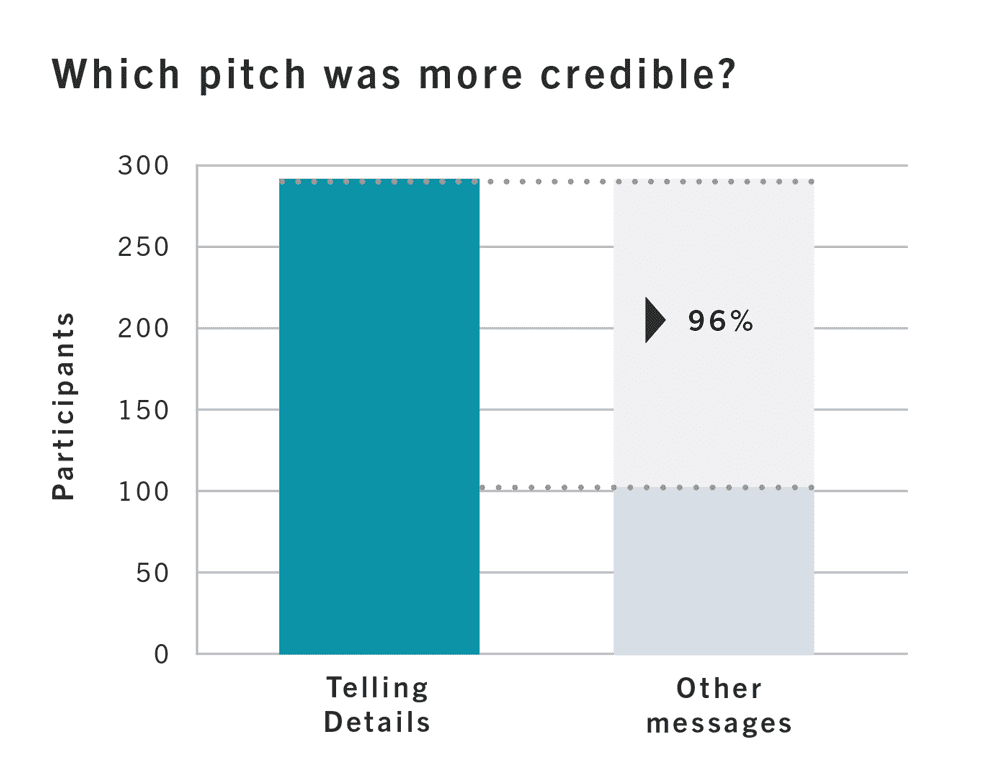
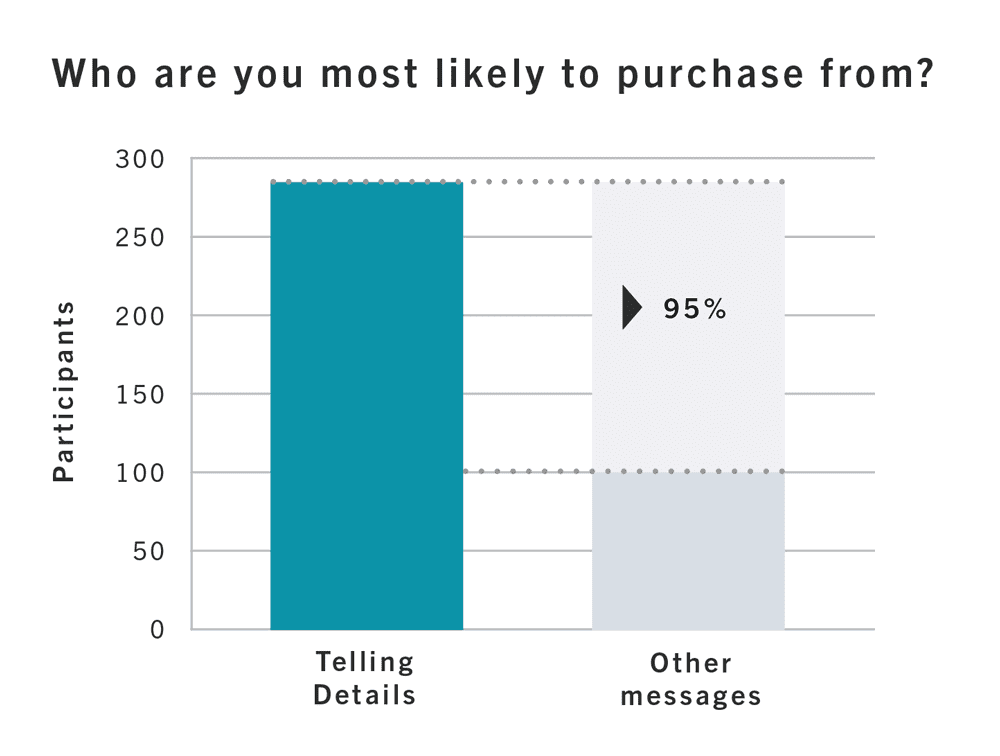
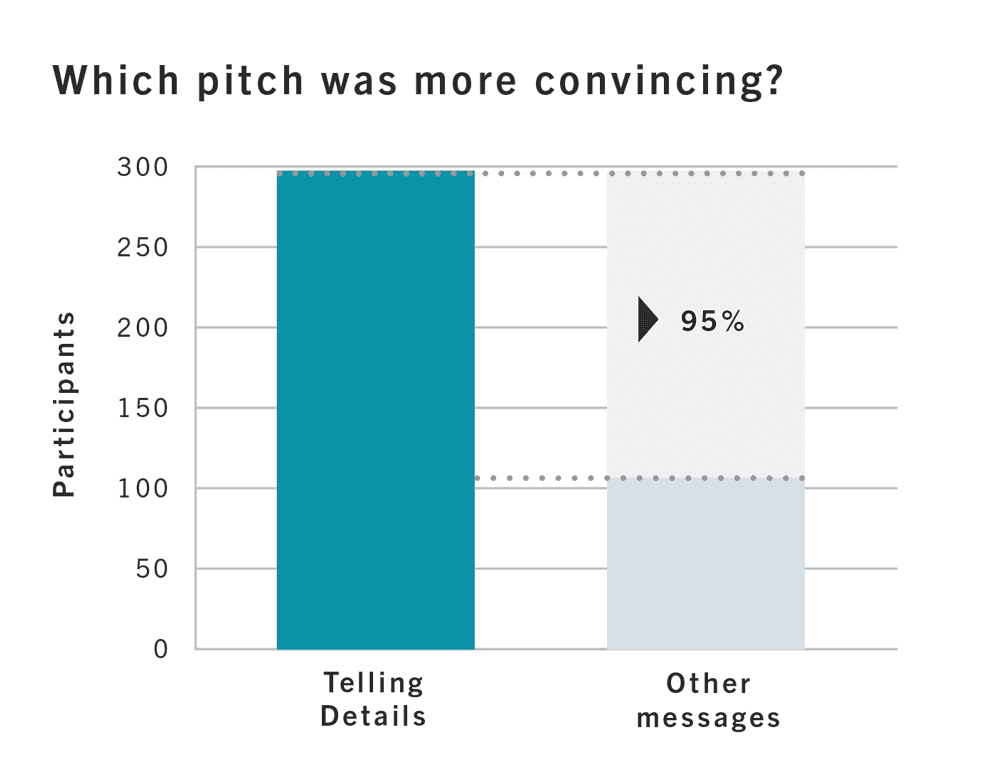
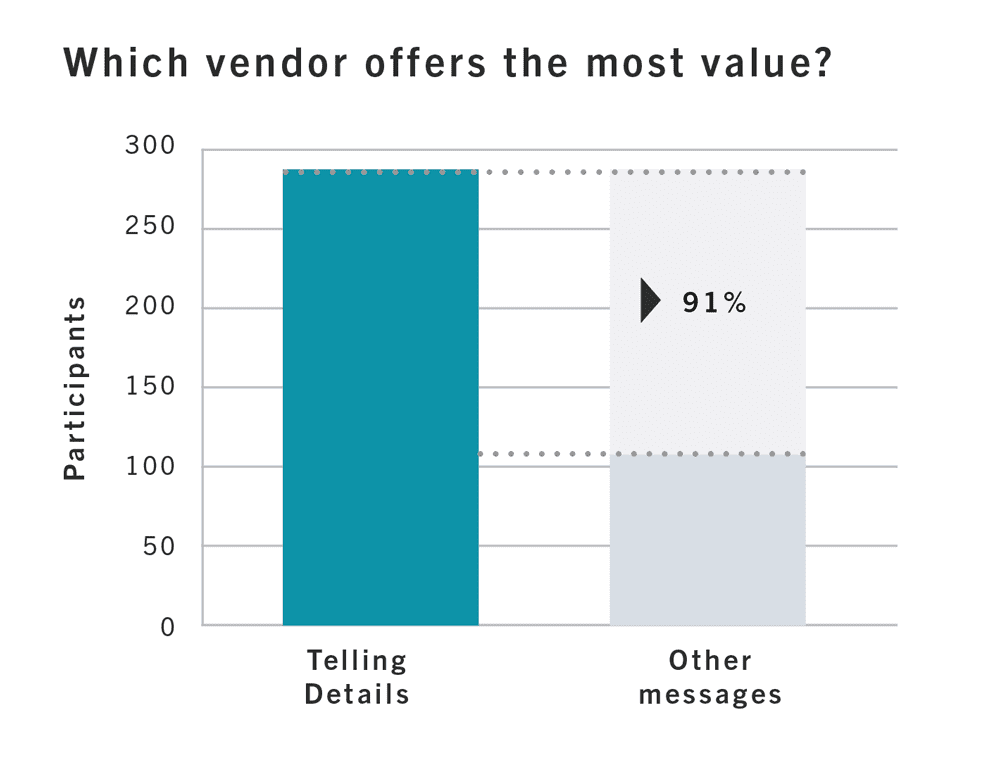
One solution, four stories
Here are some excerpts from each message. The highlighted elements show key differences.
Features – When you work with Highway Fleet Services and source your drivers from us, you’ll access our searchable and re-marketable database of 80,000 drivers known to Highway Fleet Services. We also provide a fast and efficient onboarding process designed specifically for truck drivers, powered by our full-time recruiters who understand driver regulations. Not only that, Highway Fleet Services has long-tenured regional managers overseeing driver services in 300+ locations across the country. We have all the services that any fleet owner would want or need from a driver recruiting company.
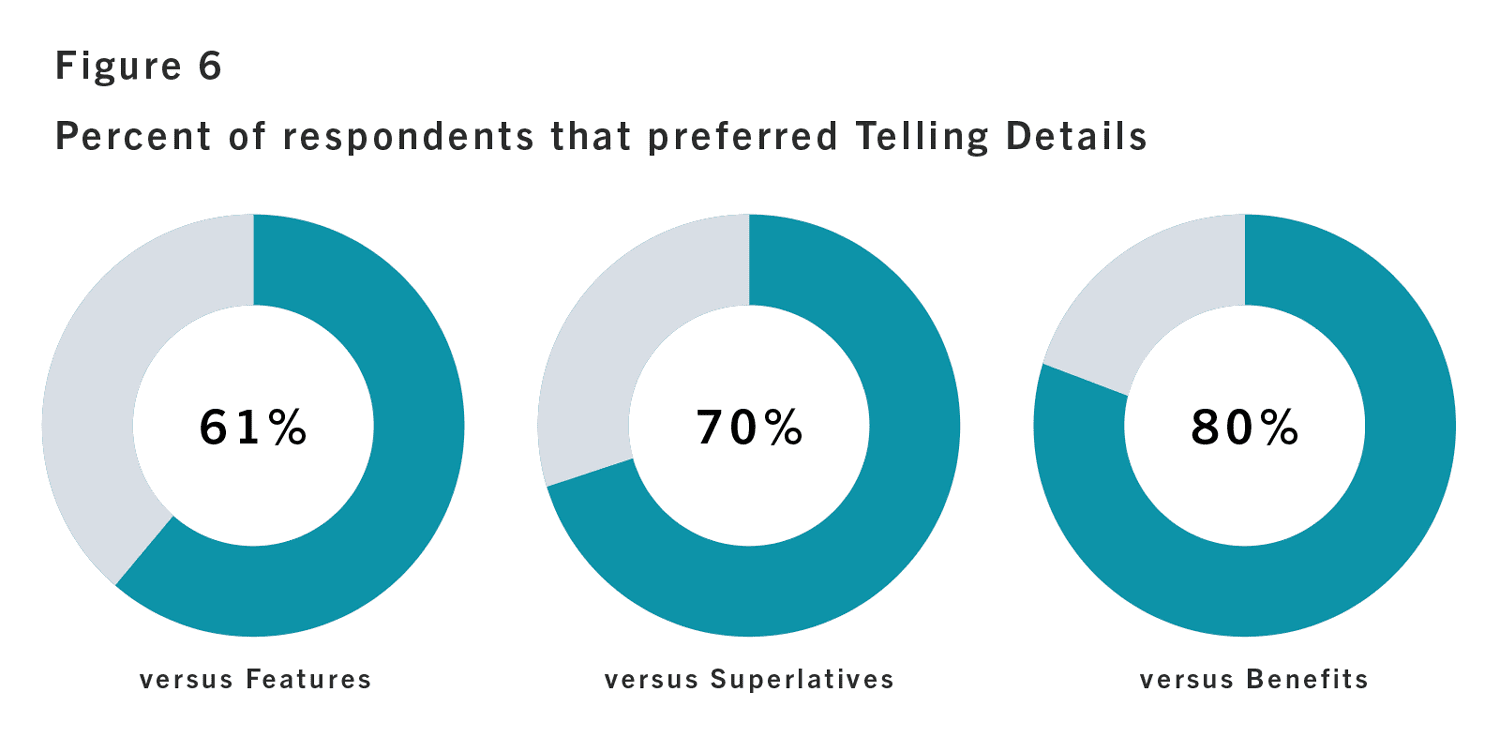
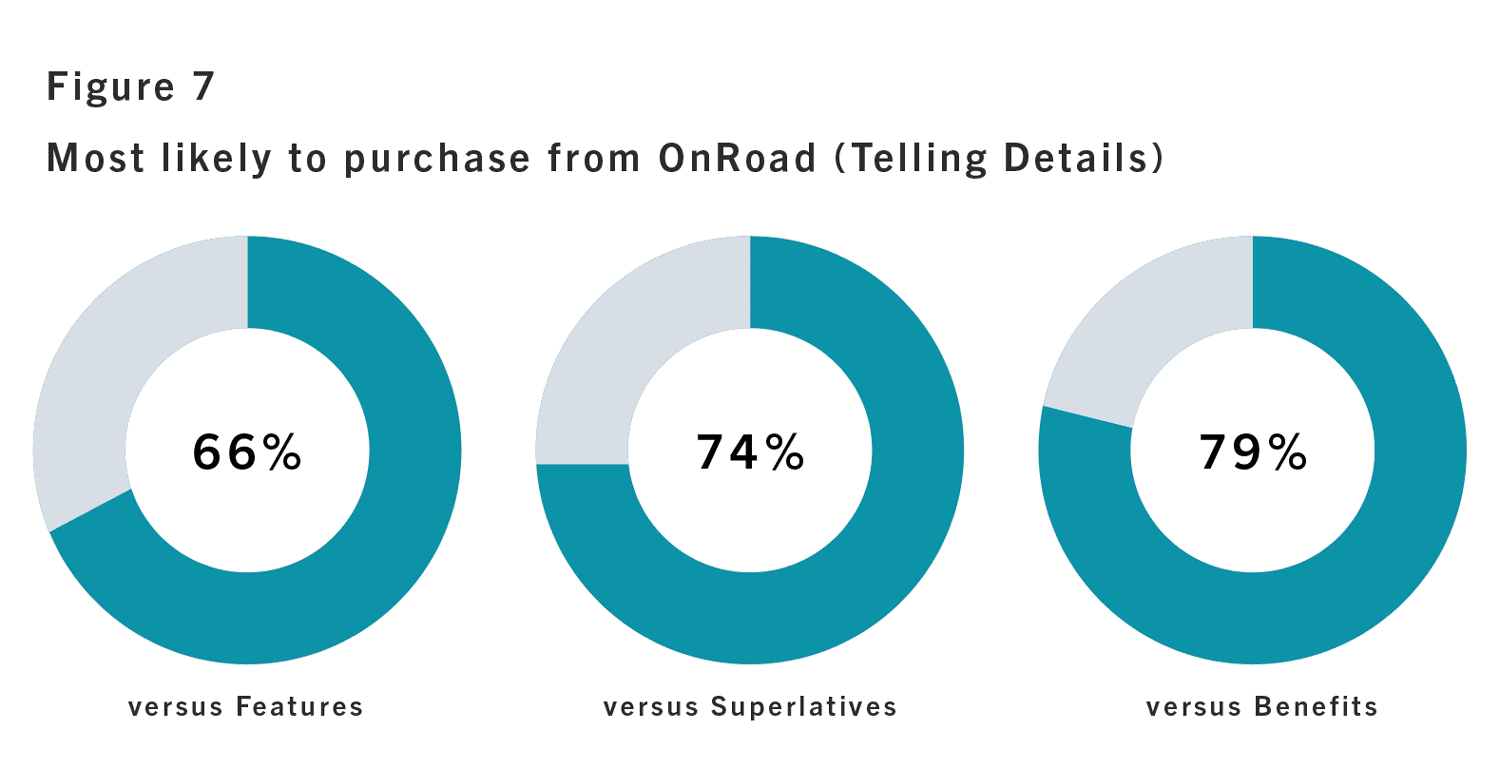
Benefits – When you source drivers from Highway Fleet Services, you can fill empty seats while improving quality. Thanks to our large driver database, your fleet will get ahead on recruiting qualified drivers. Once they’re hired, you’ll be able to onboard new drivers in just days instead of weeks. And Highway Fleet Services’ large geographic footprint means you can scale your business as demand fluctuates.
The premise was simple: What if you took the same feature set from the same company and told the story in a different way? Can one version of the story consistently and materially defeat a different version of the story – even when both stories are based on the exact same capabilities?
Superlatives – When you work with Highway Fleet Services, you get a one-stop-shop for all your driver recruiting and onboarding needs. We have an all-in-one platform and driver database to hire the highest-quality drivers. With Highway Fleet Services’ streamlined onboarding program, you’ll be able to bring drivers up to speed instantaneously. And with a comprehensive network of local offices, you can scale your business as demand fluctuates.
Telling Details – When you source drivers from OnRoad Logistics, you can fill empty seats while improving quality. With our 80,000+ known driver database, you can recruit non-stop to shorten or eliminate empty seat time. OnRoad Logistics’ full-time recruiters are in constant contact with these database drivers, establishing qualifications and preferences even when no jobs are open. That means you can quickly apply your job criteria to qualified and interested drivers who are known entities.
Once hired, you’ll onboard drivers in days instead of weeks because our recruiters will lead the heavily regulated onboarding process. This reduces your risk, as every OnRoad Logistics driver has a five-year criminal background check and ten-year employment verification. And our unmatched geographic footprint – with 300+ locations led by tenured regional managers with deep ties to local driver pools – means you can match your hiring to demand.
A clear and obvious winner
The study results reveal a clear and obvious winner: Telling Details beat every other message, individually and in the aggregate, across every variable tested (Figures 1-5).
The researchers randomized the order in which each participant reviewed the messages to eliminate any potential order-effect bias. So, some participants heard the Telling Details message first, while others heard it last. But in both scenarios, participants consistently chose the Telling Details pitch.
In the context of a competitive selling scenario, the Telling Details message wins out regardless of whether you’re presenting first or last or somewhere in the middle.
Simply put: the better story wins, regardless of when your buyer hears it.
Why do Telling Details work so well?
If your message doesn’t include rich, detailed, and value-based language about your capabilities, it won’t be nearly as believable.
Why does the Telling Details approach work so well? The Telling Details message is:
- Buyer-Focused – It uses language like “you can” and “that means” to frame each capability in terms of how they apply to your buyer.
- Specific – It includes more specific information, including quantitative values to describe each capability.
- Detailed – It elaborates on each capability with additional details that enhance and complement the value.
The added details might make your message longer. But it’s not just adding more words for the sake of it – those additional details bring clarity and focus to an otherwise fuzzy capability description.
If clarity is the goal, it’s not surprising that the Superlatives message didn’t win in this study. Participants said the Superlatives message was 102 percent less clear and 97 percent less credible than the Telling Details message.
People aren’t persuaded by exaggerated marketing language. In fact, those superlatives make it difficult for buyers to understand what you’re offering. They need to work harder to filter through your words and interpret what you’re trying to say. And that lack of clarity makes your claims less credible.
Another surprising finding was that the Features message scored better than the Benefits and Superlatives messages across almost every variable tested (Figures 6-7). The Features message included some of the specific quantitative details from the Telling Details pitch, which suggests your buyers want to know precisely what your solution offers – not just how you think it might benefit them.
This once again shows that shorter is not always better. When you shorten your message and choose between features versus benefits (instead of including both), you lose. But unless you can reach the level of Telling Details with a more detailed, concrete, and buyer-focused message, the research is clear: you’re better off simply listing your solution’s distinct features.
Avoid the parity trap
Even if your message is based on the exact same capability set, how you tell the story dramatically changes your odds of winning.
When building your capabilities messages, don’t just talk about features or benefits. Don’t use empty language to try and spice up your pitch. Instead, use specific, telling details and descriptive language to make your message more believable, increase your impact, and avoid the parity trap.


